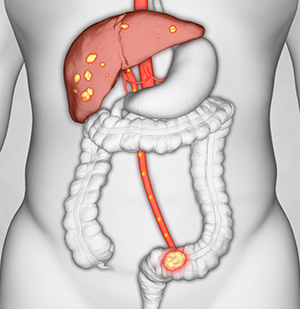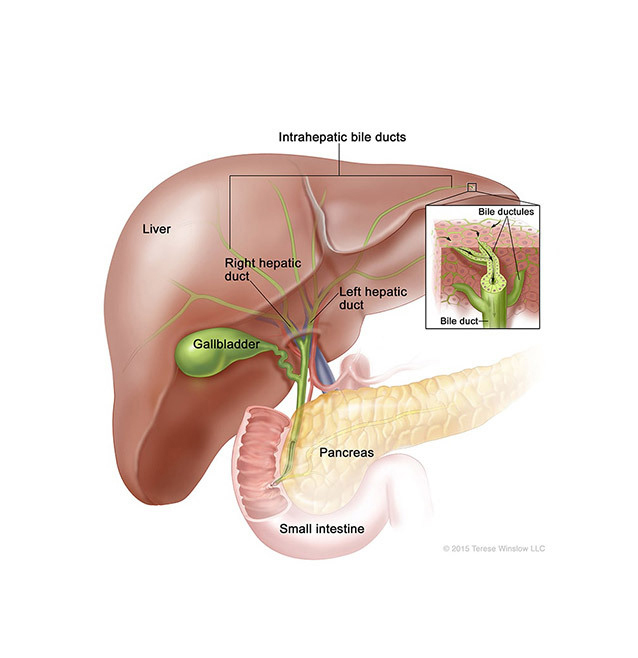Hepatic Artery Infusion Therapy
Hepatic Artery Infusion Therapy
A powerful treatment option for patients living with colorectal or bile duct cancer that has spread to the liver
If you or a loved one has received the challenging diagnosis of colorectal or bile duct cancer (intrahepatic cholangiocarcinoma) that has spread to the liver, you may be looking for treatment options.
Hepatic Artery Infusion (HAI) therapy may be an appropriate therapy for patients with these diagnoses. HAI is being increasingly adopted by leading cancer centers across the U.S. and has been shown in clinical studies to improve chances of survival and life expectancy for people with these conditions.
Intera Oncology was founded by family members and friends of patients who received these diagnoses and benefited from HAI therapy with the mission to ensure HAI therapy is available to all those who could benefit from it.
.jpg?alt=media&token=c3294480-2c6a-440e-9ecc-c57ed7e96d02)
What is Hepatic Artery Infusion?
Hepatic Artery Infusion (HAI) therapy is a treatment for colorectal or bile duct cancer (intrahepatic cholangiocarcinoma) that has spread to the liver. Traditional systemic chemotherapy is usually delivered through a vein, requiring the drug to travel through the body’s bloodstream to reach the liver. Only a small portion of the chemotherapy ultimately reaches tumors in the liver 1.
With HAI therapy, the drug is delivered to the liver using the Intera 3000 HAI Pump, which is implanted just below the skin in the abdomen. This precise, localized delivery provides up to 400 times higher drug concentration to the tumors compared to systemic chemotherapy. The drug is administered through the hepatic artery directly to the tumors in the liver, limiting potential side effects elsewhere 1.
See how it works
Conditions Treated With HAI
Colorectal cancer is one of the three most common cancers, affecting nearly 150,000 people in the United States each year. Tumors first form in the inner lining of the colon or the rectum (parts of the digestive system). As with many cancers, if the tumors have spread beyond the colon where they originated, patient treatment can become more complex and challenging. The main location of spread of CRC tumor cells is to the liver 2.
For people whose colorectal cancer has spread to the liver but cannot be surgically removed, Hepatic Artery Infusion therapy may be used to prevent the tumors from growing and can sometimes shrink the tumors to the point that they can be surgically removed or disappear altogether.
For patients who have had their colorectal cancer surgically removed from the liver, clusters of cancerous cells too small for a surgeon to see may remain. Doctors may use HAI therapy after surgery (in an “adjuvant setting” or in addition to surgery) to treat these cells before they can grow into tumors.

Intrahepatic cholangiocarcinoma is a rare cancer that occurs in the bile ducts within the liver, impacting about 5,000 in the United States each year 3.
Hepatic Artery Infusion therapy may be used to treat people with intrahepatic cholangiocarcinoma to prevent further spread of cancerous cells within the liver. In some cases, HAI therapy may assist with shrinking the tumors to the point where they can be surgically removed.

The information provided on this website is for general educational purposes only and is not a substitute for professional medical advice, diagnosis or treatment. Always talk to your doctor about the best treatment options for your individual situation.
1Power DG and Kemeny NE. Mol Cancer Ther. 2009; 8 (5).; 2Siegel R et al.CA Cancer J Clin 64:9-29, 2014.; 3Massarweh NN, El-Serag HB. Cancer Control. 2017 Jul-Sep;24(3):1073274817729245.
24/7 Clinical Call : USA & Canada (800) 660-2660
WS-1002 Rev A





